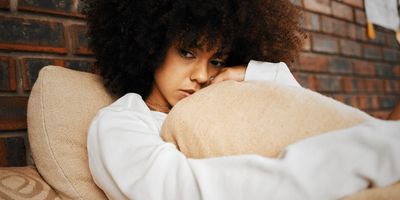Human Interest
Recently, a young content creator named Mayte Lisbeth posted an emotional video about experiencing touch starvation. She expressed that she feels she is dying from touch starvation and does not receive hugs. Additionally, if she were to receive a hug, she would crumble. The nearly three-minute video continued as Lisbeth breaks down her need for touch. Healthline says touch starvation or deprivation “occurs when a person experiences little to no touch from other living things.”
According to research posted in the National Library of Medicine, “touch is a powerful tool for communicating positive emotions.” Furthermore, other studies emphasize the importance of social touch. When an individual lacks touch, they can experience the following: depression, anxiety, stress, relationship dissatisfaction, difficulty sleeping, and detachment. Moreover, people who do not enjoy being touched can also experience deprivation due to occasionally longing for a hug or handshake.
Lisbeth’s video was triggering because touch starvation is something I experienced in the past. The first time I experienced this was when I was 17 years old after moving across the country to a state where I had no family. It happened again during the pandemic. I remember going into the pandemic optimistic as I really could be.
It worked for the first several months but quickly spiraled into some of my most challenging times, emotionally and mentally. That feeling was amplified when there was no one I truly loved to hug me. Something about a long embrace from a loved one assured me that no matter how dark my world was at the time, there was a light at the end of my darkness. Being away from my support system was rough during that time of uncertainty.
I was not fully aware of what touch starvation was at the time, but I knew I longed for touch. It was not until I was visiting my best friend and randomly asking for a hug that I remember having an immense sense of anxiety and sadness.
The content creator stated in her video that the solution is more complex than scheduling a hair appointment and receiving services. The form of touch was not suitable because she had no ties to these people. It is more about receiving affection, which can come in touch from someone who cares about her, not specifically a romantic touch.
First, I commend Lisbeth for her vulnerability and courage to speak on a subject many sometimes do not know about or even acknowledge. She even commented that her family was not big huggers, which did not help her touch starvation. She could count how many times she hugged her parents when she saw them last. Unfortunately, a lot of the time, this is the norm for many families. “I do not know how to heal in a community; I only heal alone,” Lisbeth tearfully explained in a follow-up video. People instantly flooded her social media pages with support and suggested solutions, including breathwork, touch work, and even hiring a professional cuddler.
Sadly, many suffer from touch starvation and do not have family or a tribe to contact. If that is your current situation, here are some exercises that copy touch sensation when experiencing touch starvation.
- Blankets – Wrapping yourself up in a blanket can provide comfort. Another option is a weighted blanket. A weighted blanket mimics receiving a hug, which can provide a sense of calm for an individual.
- Self-Touch Breathwork – The counselors at Twinpowerment, LLC taught us a five-step self-holding technique that could help remedy touch starvation.
- Body Pillows (or pillows) – Cuddling up to a body pillow can mimic cuddling and allow comfort during sleep.
- Cuddle Therapy – Like the name states, you can pay a professional to cuddle with. The Institute of Counseling in Nigeria explains that “Cuddle therapy fills a niche that is complementary to traditional talk therapy.” With traditional therapy, a mental health professional cannot touch their clients.
- Companion Animal – Dogs and cats make excellent companion animals. The endless number of cuddles and “kisses” they provide can offer comfort during hard times.
Even though traditional therapists cannot provide touch to their clients, they are a great option if your symptoms from touch starvation increase.
Since then, Lisbeth has posted videos explaining remedies she has tried or is willing to try. Some days are better than others, but she keeps moving forward. I pray she finds peace during these times.
Let’s make things inbox official! Sign up for the xoNecole newsletter for daily love, wellness, career, and exclusive content delivered straight to your inbox.
Feature image by People Images/ Getty Images
ALSO ON XONECOLE
